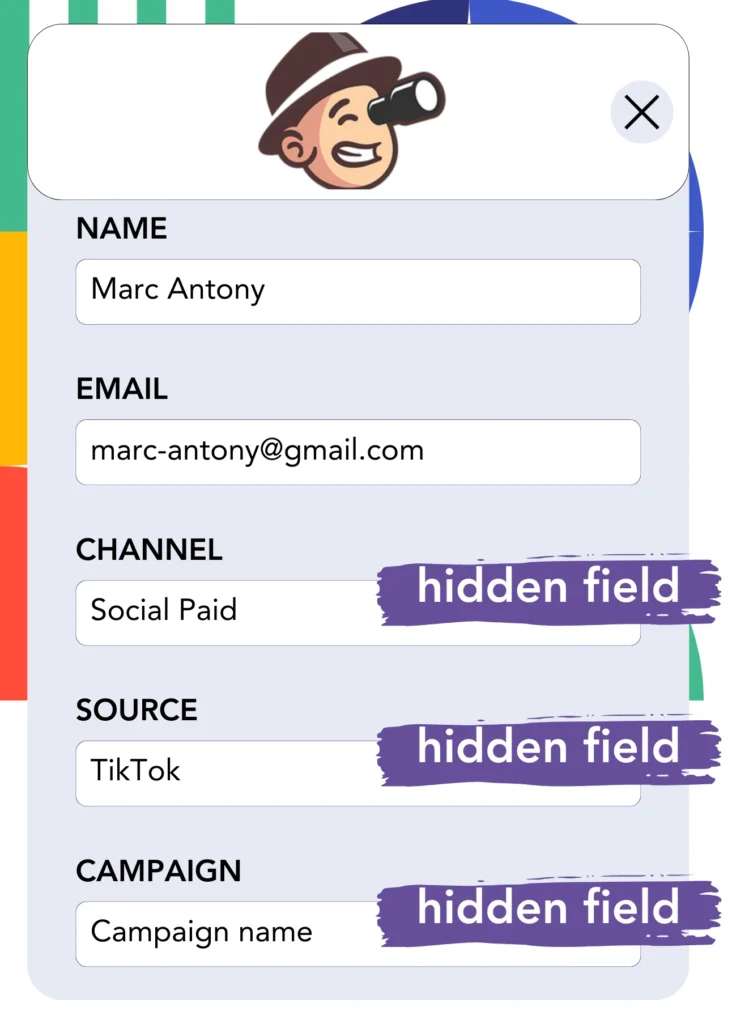Are you running ads on TikTok but not sure which one contributed to your leads, sales, and revenue?
You might know the total leads from each TikTok ad, but analyzing them at the lead level is difficult.
This means you can’t trace which TikTok ad drove the leads that converted, complicating ad budget optimization.
This problem is solved by using Leadsources.
TikTok ad data (campaign, ad group, ad) for each lead is accurately tracked by Leadsources.
QuestionScout lets you store TikTok ad data for every lead.
You can then generate reports, like “Ads with the most sales or revenue,” to determine which ads to boost or stop.
Let’s get started!
Capture TikTok ads in QuestionScout
Step 1: Add Leadsources in the head tag of your website

Sign up to Leadsources.io for free (benefit from our 14-day free trial).
Add the Leadsources script into the head section of your site.
No code is necessary, follow this easy step-by-step guide.
Step 2: Add the UTM parameters to your TikTok campaigns

Embed UTM parameters in TikTok ads to analyze essential metrics (campaign, ad group, ad).
As an illustration, add these UTM parameters in the links related to your TikTok ads:
- UTM_medium=paidsocial
- UTM_source=tiktok
- UTM_campaign=campaign-name
- UTM_term=ad-group-name
- UTM_content=ad-name
The final URL will look like this:
https://www.yoursite.com/?UTM_medium=paidsocial&UTM_source=tiktok&UTM_campaign=campaign-name&UTM_term=ad-group-name&UTM_content=ad-nameKeep in mind that Leadsources collects lead source data without UTM parameters in play. It monitors things like channel, landing page, and landing page subfolder to ensure you have a complete understanding of each lead’s origin.
Step 3: Add the hidden fields in QuestionScout

When a user submits your QuestionScout form, Leadsources automatically fills the hidden fields with relevant TikTok ads data (campaign, ad group, and ad).
Review our extensive guide on adding hidden fields in QuestionScout to make sure your setup is finished.
Leadsources directly saves the TikTok ads data into your QuestionScout form (see Step 4 for more information).
Step 4: Capture the TikTok ads data in QuestionScout

Leadsources retrieves the TikTok ad data (campaign, ad group, and ad) when a visitor clicks on your TikTok ad and visits your site.
Leadsources ensures the TikTok ads details are automatically included in the hidden fields of your QuestionScout form.
After submitting the form, both the TikTok ads data and the responses are sent to the QuestionScout submissions page for every lead generated.
How does Leadsources work?
Adding the Leadsources script to your website allows you to gather TikTok ads data (campaign, ad group, ad) whenever someone lands on your site.
This data is automatically populated in the hidden fields of your QuestionScout form.
Leadsources will collect the subsequent information from visitors:
- Channel
- Source
- Campaign
- Content
- Term
- Landing page
- Landing page subfolder
This makes it feasible to track important lead sources even without UTM parameters, including organic traffic from:
- Google Search
- Instagram bio link
- Social media posts
- Etc.
While most tools need UTM parameters for lead information collection, Leadsources efficiently tracks leads without them, providing extensive insights.
Leadsources monitors lead data from every available source, including:
- Organic Search
- Paid Search
- Organic Social
- Paid Social
- Referral
- Affiliate
- Display Advertising
- Direct Traffic
This aids in the unification of all lead source data into one location for easier tracking and evaluation.
Pro tip:
Track TikTok ads in your favorite online form builder, including Cognito Forms, Gravity Forms, Jotform, Typeform, or WPForms. Using another online form builder? Check our guide on how to track TikTok ads in your form.
How to run performance reports
With your TikTok ads data captured in QuestionScout, you can produce performance reports such as:
- Leads, sales, and revenue by channel
- Leads, sales, and revenue by source
- Leads, sales, and revenue by campaign (aka. Tiktok campaign)
- Leads, sales, and revenue by term (aka. Tiktok ad group)
- Leads, sales, and revenue by content (aka. TikTok ad)
- Leads, sales, and revenue by landing page
- Leads, sales, and revenue by landing page subfolder
This enables you to analyze your TikTok budget effectively.
Now, let’s take a closer look at the different reports you can create.
1. Lead performance reports
Reports can be made to highlight the total number of leads gathered from:
- Channel
- Campaign
- Ad group
- Ad
- Landing page
- Landing page subfolder
Example #1: Leads by channel
This report allows you to analyze which channel is leading in terms of lead generation.

Example #2: Leads by TikTok campaign
Identify a defined lead source, for example, TikTok, and measure the number of leads produced by each campaign.

Example #3: Leads by TikTok ad
Once you recognize the TikTok campaign responsible for the most leads, you can dive into which ad group or ad is crucial to that performance.

2. Sales performance report
Understanding which TikTok ads and target audiences create the most leads is significant. But do these leads also enhance your sales and revenue?
Importing your QuestionScout data into a CRM such as GoHighLevel allows you to monitor which leads become paying customers. This enables you to develop sales reports that utilize your TikTok ads data (campaign, ad group, ad).
Here’s an example worth considering:
| Channels | Search Paid | Social Paid |
| Leads | 50 | 75 |
| Sales | 5 | 6 |
| Average order value | $150 | $100 |
| Revenue | $750 | $600 |
After evaluating your advertising campaigns on Google and TikTok, the preliminary “Leads by Channel” report revealed that TikTok Social Paid ads led to a greater number of leads than Google Search Paid ads.
Yet, upon evaluating your sales and revenue data from the CRM export, you realized that the Search Paid channel brought in more revenue, despite having a lower lead count compared to the Social Paid channel. This points to a possible chance to raise the Search Paid budget.
Also, you can create various reports to evaluate sales and revenue performance more thoroughly, including:
- Sales and revenue by source
- Sales and revenue by campaign
- Sales and revenue by content (aka. ad)
- Sales and revenue by term (aka. audience)
- Sales and revenue by landing page
- Sales and revenue by landing page subfolder
LeadSources tracks the source of each lead in QuestionScout, whether they come from ads, organic search, social, email, etc. and syncs that data with each submission. See the full breakdown on the lead source in QuestionScout page.

